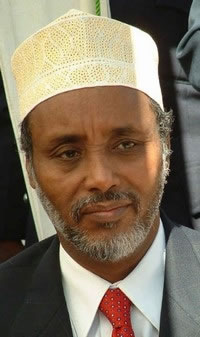I tend to be of the opinion that Somalis are the largest undocumented ethnic group in the world. 17 million people yet no one knows their history beyond the last few centuries. There's records of civilization in the region but no record of any group of people known as Somalis or by any other name.
I would like to present a theory to those Somalis [and others] who would like a clue into the past.
The Somalis you're familiar with today in the West and in urban Somalia are perhaps 30-50% of the real Somali demographic diversity. In my youth I knew a colony of Sufi Muslim cannibals from east-central Africa residing in southern Somalia, a colony of boar-hunting Muslim drunks in the central regions, as well as communities of fair skinned Mediterranean looking tribespeople in the eastern regions. These people make up around 20% of the population and are undocumented or otherwise go totally ignored, and their cultural oddity give us cues into the past.
What's a fact is that a trading civilization flourished on the Somali coast stretching from the northeast to the northwest - part of the wider "Land of Punt" that the Egyptian queen Hatshepsut made her famous expedition to. My own father and every older Somali knows this tale. These people were described as being lanky and reddish-brown, much closer in appearance to the peoples of ancient Egypt and Southern Arabia than those of modern-day Somalia who are a dark brown hue. Today, still in Somalia's coast there are isolated tribes who live in the coincidentally-named "Puntland" region stretching into the neighboring Northwestern regions who are fairer-skinned and have long, wavy hair - they're out of place in the mainstream Somali race but accepted within the clan system and playfully mocked as being the descendants of ship-wrecked foreigners, usually erroneously as Indians or Arabs. These are people, along with the southern drunkards - that my uncle refers to as "those who were already there" - in other words when the true Somalis reached closer to the coast they found these settled races already living there; this migration lasted from around the year Zero to about 1800AD.
My belief is that a darker-skinned race of people in the interior, with all the same qualities of modern hinterland Somalis (the more nomadic Somalis who are averse to trade or foreign cultures) found their way to the coast and overthrew this civilization. In effect, the Somalis destroyed the previous civilization and created new societies adopting systems from the past. The Somalis in the northeast are by far the closest in culture if not looks to their "Punt" predecessors, which makes their modern-day regional name "Puntland" very fitting. These Somali overlords absorbed large numbers of these coastal "Punt" people and over time affected their own appearance and structure of their language. The Afar nomads neighboring the Somalis also did the same, perhaps in cohorts with their Somali cousins.
The original Somalis bordered (and still do) the modern-day Massai, Turkana, Samburu and Rendille - all of whom are Nilotic-speaking peoples. There are Turkana and Rendille who claim descent from Somali clans and Somali clans who have been absorbed into the Rendille and Samburu, its a well known cultural paradox. In Ethiopia, where the Somalis border the Oromo, there are clans that straddle both sides of the ethnic definition, including the Akishe, the Garre, and the Gurgure. The closest physical cousins outside of the Cushitic-language family to Somalis are the Nilotic cultures that straddle Kenya and Tanzania. In many cases its hard to distinguish and they have intermarried heavily.
This isn't completely out of the ordinary - the Turks of Central Asia did the same thing when they reached Anatolia in the same amount of time. In fact we're looking at an identical scenario.
The original Somalis were an aggressive, cattle herding race of people who branched off from their Oromo cousins and their Nilotic neighbors to conquer the coasts and eventually destroyed the established peoples and inhabited their civilization, then over time the Somalis established the old trade networks and brought in camels and other Near Eastern goods that define modern Somali culture.
Below I'll demonstrate three types of Somalis - and even a blind man can tell you that despite the fact that these three men can easily come from the same family or clan - they look nothing alike, even on an ethnic basis - yet all 3 of these men I've chosen come from the same region and consider themselves one and the same. The first guy would be the easiest to associate with the Somalis' southward Nilotic neighbors by appearance and he is the original Somali. The second guy looks like the second-stage of pure Somalis and is the base definition of what a Somali looks like, meaning he looks considerably different than his Nilotic neighbors than the first guy and as a result of the "Punt" conquests he looks considerably more like a modern Somali. The third man looks furthest from the original Somalis or even most modern Somalis, with more facial hair and fairer skin, but comes from the same clan as the first man despite the difference in appearance and they will readily identify with each other on the clan basis. In modern Somalis, at the end of the day I believe there is the conquered class (the fair skinned ones) and the conquerors (the dark-skinned, thinner, harder-haired ones) plus of course the adopted and assimilated groups, and that is my final verdict. Clearly the origins of Somalis are not all from one branch of people, the differences are immense and a lot of invasions took place.
I feel like a Doctor after writing all of this.
Thoughts?
Where is James?











